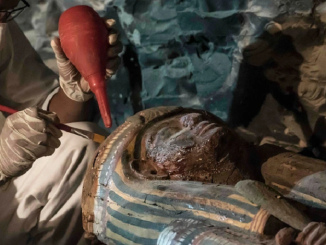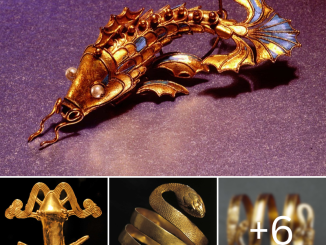From hunter-gatherer tribes to modern times, humans have been adorning themselves with gems, beads, gold and silver for ages. And over the years, jewelry designs become more and more eye-catching.
The beginning
Many years ago, starting in 110,000 BC, people used seashells as beads and amulets. Archaeologists have found fossilized seashells and determined that they belong to the Gravettian culture. Gravettians seem to always wear jewelry even when hunting mammoths.
Thracian Gold
Gold appeared around the time humans invented the wheel and began domesticating animals in 4400 BC. Known for their ability to withstand the wear and tear of time, Thracian craftsmen created many gold treasures, which were found in Bulgaria.

These small jewels were found during the discovery of one of the largest excavations of Thracian treasure. These small balls were placed in a Thracian tomb more than 2,400 years ago.
Mesopotamia
The Sumerians, who ruled Mesopotamia, were people who loved to wear jewelry. Their designs are based on animals, grapes and some geometric shapes. This lovely necklace was found in Iraq.
This exquisite piece of jewelry is an earring or part of a diamond bracelet. The Mesopotamians were one of the first peoples to introduce gems into jewelry making, using stones such as agate, jasper, lapis and carnelian.
The hieroglyphs on this bead date back to ancient Egypt, where a jewelry revolution was underway, starting with the engraving of small steatite beads like this one.

Craftsmen then discovered how to work with metal, so they began creating jewelry inspired by birds, scrolls and scarabs.
This novel piece comes from the famous tomb of Pharaoh Tutankhamun, from the 14th century BC. The Egyptians’ obsession with the scarab beetle was because it symbolized the sun god Re.

The Egyptians also began creating more elaborate designs with gold, gathering alluvial gold from rivers by panning. Their goldsmith skills improved.
Ancient Greek
The Greeks broke with previous trends by using more gemstones in jewelry making. Inspired by seashells and animals, their favorite style combines amethysts, emeralds and pearls with gold.
Created during the Hellenistic period, these earrings depict the head of an Ibex, a type of wild mountain goat.
Romans

From 500 BC to 400 AD, the Romans changed style. They admire snakes because they symbolize fertility and creative vitality. Snakes are also symbols of the cult of goddess Isis.

The Romans also brought utility to jewelry by wearing seal rings and amulets. They are often decorated with today’s popular stones such as diamonds, sapphires and emeralds.
The Byzantine Empire, also known as the Eastern Roman Empire, was initially considered a trading point between the Eastern and Western worlds. Many precious stones flowed through these trade routes, heralding a new style rich with metals and precious stones.

Emperor Justinian was so fond of jewelry that, in 529 CE, he decreed that all free men could wear gold rings – but jade, emeralds and pearls were reserved for the Emperor only.











